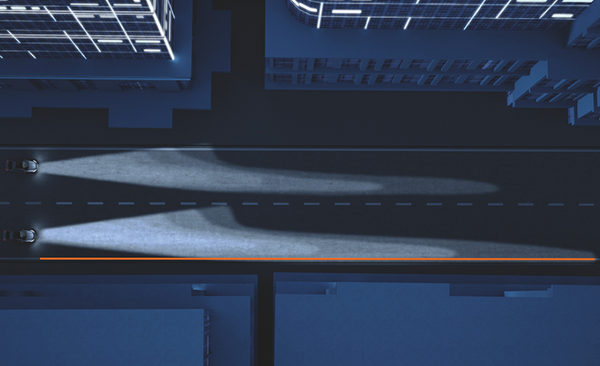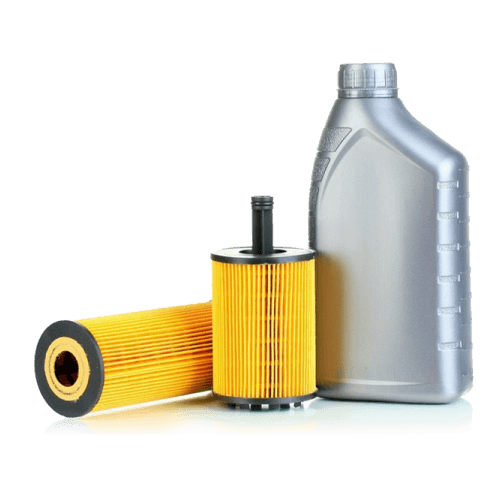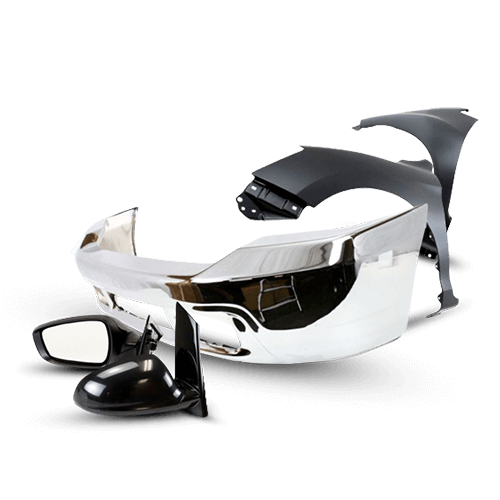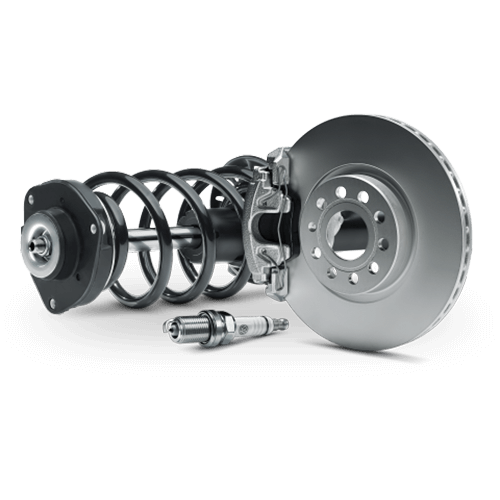
Headlight Distance Vs. Brightness
Osram Night Breaker Laser halogen bulb claims to have a distance of up to 150 meters. 2017 Auto Express Product Awards winner, Philips Racing Vision halogen bulb attests to 150% more brightness. HID bulbs like Philips X-treme Vision, again, claims 150% more vision and Osram Night Breaker Laser HID bulbs states that their HID bulbs shoot up to 250 meters. These are all well and good, and we also understand that the marketing team of Philips and Osram is hard at work. However, the fact of the matter is that most drivers don't need to see that far. Here's a primer on how to increase car headlight brightness.
On a clear day, most people could probably see the horizon. That is about three miles away, and standing on a high mountain top in a pitch black night, you can see candlelight shining 30 miles away. Finally, the fact that you can see the stars in the night tells you that human eye can cover quite a distance. However, the point of this blog is not to measure and wonder the eye's ability to see in such distance, but the practicality of headlight bulb in the night time driving.
Going back to the first point, Philips and Osram bulb state that their bulbs go up to 150 meters, some even further. The fact is that this is not false advertisement. It is probably all true. However, notice that there is a small detail missing: The indication of the brightness of the light in those distance. Without that information, distance is quite useless. What is the point of seeing an obstacle at 3 miles away? No sane driver would step on the brake to avoid something that is 3 miles away. What is important is that your headlight is bright enough that you see the immediate road you are driving and that beam pattern is wide enough to cover all the road signs and an unexpected person, animal or debris that may come toward your way.

I will end this blog with an excerpt from Osram blog (As far as the eye can see. By Fritz Lorek March 19, 2018) that explains the proper calculation of distance vs. brightness. (Note: "Dipped beam" mentioned in below blog refers to "low beam.")
"The closer to the headlight, the more the illumination increases.
The full specification for range information has to be something like this: 80 meters at three lux (lx). And that’s the sort of information that reputable lamp manufacturers such as OSRAM provide. So the distance or range information refers to the point at which illuminance has dropped to this value. The closer to the headlight, the more the illumination increases. Beyond 80 meters it quickly drops off, but there’s still some light of course.
Choosing three lux was not random. Drivers can still make good use of these lighting conditions and illuminated obstacles are visible. Now, the eye can also cope with significantly lower illuminance levels. 0.25 lux is enough to read the newspaper when you’re young. At 0.1 lux you can still walk without breaking your neck. But the major difference to driving lies in what is called adaptation. The eye needs several minutes to get used to the dark and become sensitized. When driving, there is no complete darkness to adapt to though – for one thing because of your own headlights.
A dipped beam range of 80 meters – to stick with the example above – doesn’t mean that there is three lux in all areas on the road.
A dipped beam range of 80 meters – to stick with the example above – doesn’t mean that there is three lux in all areas on the road. The information always refers to the outermost tip or finger of the light distribution, which is asymmetrical in dipped beam. Your own side of the road – the right one in right-hand traffic – is illuminated much stronger than parts further to the left. For left-hand traffic it’s the other way round of course. In other words, the point the range information refers to is located on the side of the road. In Europe, for example, as near as 25 meters away and 50 centimeters high only one lux is allowed to reach the side of the oncoming traffic to prevent glare. In the US higher values are allowed.
Measuring the light that reaches this point requires expensive, high-quality measuring equipment. Just any old exposure meter won’t do. And the professionals actually don’t measure what gets onto the road in lux, but what the headlight gives off in candela. However, the difference between illuminance in lux and luminous intensity in candela is a topic for a physics lesson. The only important thing to know is that you need one of the two for reliable range information."
On a clear day, most people could probably see the horizon. That is about three miles away, and standing on a high mountain top in a pitch black night, you can see candlelight shining 30 miles away. Finally, the fact that you can see the stars in the night tells you that human eye can cover quite a distance. However, the point of this blog is not to measure and wonder the eye's ability to see in such distance, but the practicality of headlight bulb in the night time driving.
Going back to the first point, Philips and Osram bulb state that their bulbs go up to 150 meters, some even further. The fact is that this is not false advertisement. It is probably all true. However, notice that there is a small detail missing: The indication of the brightness of the light in those distance. Without that information, distance is quite useless. What is the point of seeing an obstacle at 3 miles away? No sane driver would step on the brake to avoid something that is 3 miles away. What is important is that your headlight is bright enough that you see the immediate road you are driving and that beam pattern is wide enough to cover all the road signs and an unexpected person, animal or debris that may come toward your way.

I will end this blog with an excerpt from Osram blog (As far as the eye can see. By Fritz Lorek March 19, 2018) that explains the proper calculation of distance vs. brightness. (Note: "Dipped beam" mentioned in below blog refers to "low beam.")
"The closer to the headlight, the more the illumination increases.
The full specification for range information has to be something like this: 80 meters at three lux (lx). And that’s the sort of information that reputable lamp manufacturers such as OSRAM provide. So the distance or range information refers to the point at which illuminance has dropped to this value. The closer to the headlight, the more the illumination increases. Beyond 80 meters it quickly drops off, but there’s still some light of course.
Choosing three lux was not random. Drivers can still make good use of these lighting conditions and illuminated obstacles are visible. Now, the eye can also cope with significantly lower illuminance levels. 0.25 lux is enough to read the newspaper when you’re young. At 0.1 lux you can still walk without breaking your neck. But the major difference to driving lies in what is called adaptation. The eye needs several minutes to get used to the dark and become sensitized. When driving, there is no complete darkness to adapt to though – for one thing because of your own headlights.
A dipped beam range of 80 meters – to stick with the example above – doesn’t mean that there is three lux in all areas on the road.
A dipped beam range of 80 meters – to stick with the example above – doesn’t mean that there is three lux in all areas on the road. The information always refers to the outermost tip or finger of the light distribution, which is asymmetrical in dipped beam. Your own side of the road – the right one in right-hand traffic – is illuminated much stronger than parts further to the left. For left-hand traffic it’s the other way round of course. In other words, the point the range information refers to is located on the side of the road. In Europe, for example, as near as 25 meters away and 50 centimeters high only one lux is allowed to reach the side of the oncoming traffic to prevent glare. In the US higher values are allowed.
Measuring the light that reaches this point requires expensive, high-quality measuring equipment. Just any old exposure meter won’t do. And the professionals actually don’t measure what gets onto the road in lux, but what the headlight gives off in candela. However, the difference between illuminance in lux and luminous intensity in candela is a topic for a physics lesson. The only important thing to know is that you need one of the two for reliable range information."






